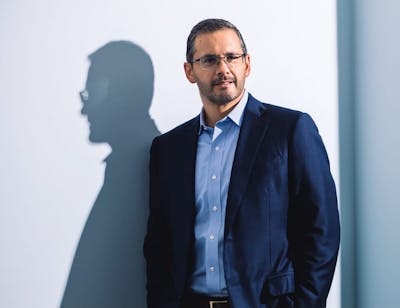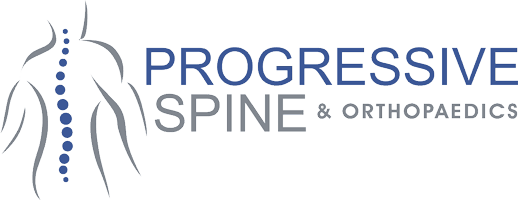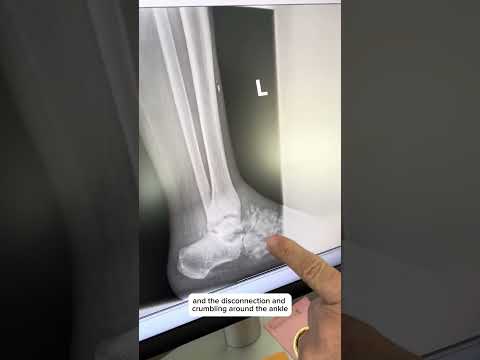If you are suffering from foot or ankle pain, it is crucial for you to receive a professional diagnosis as soon as possible. We have the experience and expertise necessary to help patients actualize successful outcomes with non-surgical treatments.
We do not accept Medicare or Medicaid - See Our Accepted Insurances
Foot & Ankle Care
Foot and ankle pain, stress fractures, sprains, and strains are common concerns. Whether your pain is chronic or acute, something can be done to resolve it. At Progressive Spine and Orthopaedics, Dr. Steven Bernstein provides foot and ankle care and healing, from non-invasive treatments to complex surgical procedures.



Featured ProcedureMinimally Invasive Bunionectomy
Beautiful, bunion-free feet can now be achieved with a Minimally Invasive Bunionectomy. With a shorter recovery time and a lower rate of infection, than open bunion surgery, it's quickly becoming one of the most popular options to remove painful and unsightly bunions. Most patients are up and walking right away!
What Foot and Ankle Concerns Can Be Addressed?
Dr. Bernstein addresses a wide range of foot and ankle concerns at our state-of-the-art center, from serious trauma to bunions. Dr. Bernstein treats the following foot and ankle conditions at Progressive Spine and Orthopaedics:



Bunions
A bunion is a bony bump that develops on the side of the foot at the base of the big toe. Structural defects, too-tight shoes, and arthritis can cause the big toe to lean toward the second toe, causing a change in the bone structure. This is usually painful and can be accompanied by calluses, corns, and redness. Anti-inflammatory medication and steroid injections can help ease discomfort. In more severe or chronic cases, Dr. Bernstein can perform surgery to remove any inflamed tissue and realign the toe by removing part of the bone.

Ankle sprains & fractures
Sprains: An ankle sprain injury is caused by an unusual twist or turn of the ankle that stretches or tears the ligaments. A sprained ankle causes swelling and pain. If the sprain is severe enough, it may require a splint or brace.
Fractures: An ankle fracture, also called a broken bone, must be immobilized to heal properly. Typically, a stabilizing boot or a cast is required. In more severe cases, surgery is required to insert pins, plates or screws to stabilize and align your bones properly so that you can heal.
Arthritis
The movement of the foot and ankle depends on cartilage, which decreases friction and allows for smooth motion. When cartilage breaks down due to wear and tear or damage, arthritis can develop. The body attempts to heal by making more bone, which is how irregular joints and bone spurs form. Arthritis also causes pain, stiffness and swelling. Depending on your needs, Dr. Bernstein treats your arthritis with a range of procedures, from orthotics and/or physical therapy to surgically fusing the bones together or replacing the ankle joint completely.
Plantar Fasciitis
The plantar fascia is a thick ligament connecting your heel to the front of your foot. It acts as a shock absorber and supports the arch of your foot. Too much wear and tear or stress can damage this ligament, causing a stabbing pain near the heel on the bottom of the foot. If steroid injections and medication do not resolve the situation well enough, Dr. Bernstein can perform foot surgery in New Jersey to detach the plantar fascia from the heel bone.
Achilles tendinitis
Achilles tendinitis is caused by repetitive strain on the Achilles tendon. This band of tissue connects your calf muscles to your heel bone. Achilles tendinitis is experienced by pain in the tendon or back of the heel that worsens with activity. This condition is treated with rest, physical therapy, and orthotics. Severe cases may require surgery to remove damaged tissue and repair the tendon.



Hammer Toe
A “hammer toe” describes a deformity of the second, third, or fourth toes. The toe is bent at the middle joint in a way that resembles a hammer.
Flexible hammertoes: Flexible hammer toes are still moveable at the joint and can be treated sooner, before the condition becomes more serious.
Rigid hammertoes: Rigid hammertoes are more serious and can be seen in patients with severe arthritis, or in patients who wait too long to seek treatment for flexible hammertoes. Surgery is typically the only option for patients with rigid hammertoes, as the tendons are tight and the joint is misaligned and immobile.

Neuroma (pinched nerve)
A neuroma (a benign growth of nerve tissue, usually between the third and fourth toe) causes pain between the toes while walking, a burning sensation, tingling, or numbness. Padding, taping or orthotics can relieve the symptoms of simple neuromas. For chronic conditions, surgery may be necessary.
Stress Fracture
A stress fracture is a small crack in a bone or severe bone bruising. Stress fractures are typically caused in the weight-bearing bones of the foot and ankle from overuse. Over time, jumping, walking, running and other activities can cause stress fractures. When an athletic movement is repeated so frequently that the bones in the foot and ankle don’t have time to heal between training sessions, a stress fracture may occur. Stress fractures are treated by keeping the bones immobilized with a walking boot or brace, and keeping the weight off the limb until it’s healed. Severe stress fractures typically require a cast.
Tendon Tears & Ruptures
Peroneal Tendon: The peroneal tendons stabilize the foot and ankle to protect it from injuries such as sprains. These tendons run side-by-side behind the outer ankle bone. Peroneal tendon injuries are typically caused by overuse and repetitive ankle motion.
Achilles Tendon: The Achilles tendon connects the calf muscle to the heel bone. It is the largest tendon in the body. A complete or partial tear can occur as if the Achilles tendon is overextended from a jump, fall, sudden jerk or pivot, or other accident.
Tendon tears require immobilization with a bandage or brace and physical therapy to heal. More severe tears or ruptures may require surgery.

Schedule A Consultation
Contact UsWhat Our Patients Have to Say
"Dr Rovner and his staff have been amazing in assisting me with my issues. I feel pleased with the service and experience I have here.
I must also say they are very convenient and work very fast to resolve any issue or concerns I always have. Thank you everyone !! Would recommend 10/10."

"I see Dr. Montero and she is amazing!!! She really takes her time to hear you out and doesn’t ever rush the appointment.
She’s super friendly and has helped me so much! The office staff is also amazing!
So nice and everything is done quickly and efficiently."

PATIENT TESTIMONIALS
Insurance Providers
Dr. Rovner and Progressive Spine & Orthopaedics also see personal injury and motor vehicle injury cases, workman’s compensation injuries, and second opinion consultations.
- Horizon Blue Cross Blue Shield
- Aetna
- Cigna
- United Healthcare
- Oxford
- Health Net
- Meritain Health
- Empire Blue Cross Blue Shield
- Anthem Health
- Emblem Health
- Magnacare
- NYSHIP (Empire Plan)
- Workers Compensation
- No-Fault
Unfortunately, we do not accept any of the following insurances:
- Medicare
- Medicaid
- Omnia
- No Out of Network Benefit
You can always contact us directly if you have any questions.
WHICH NON-SURGICAL TREATMENT IS RIGHT FOR ME?
We will begin with a thorough consultation to fully understand your pain concerns. Based on this consultation, we will create a non-surgical treatment plan that is personalized to your exact needs.
You may need more than one treatment while receiving non-surgical care. These treatments can be done on their own or in combination with each other. We will guide you through which treatment combination is best for your condition, and work with you to help achieve the pain free results you want.



Why Choose Dr. Steven A. Bernstein?
If you have experienced an injury or have been suffering from foot and ankle pain, it’s vital to choose an experienced surgeon who you can trust to get you back on your feet and relieve your pain for good. Dr. Steven A. Bernstein is board-certified by the American Board of Foot and Ankle Surgery and is a Fellow of the American College of Foot and Ankle Surgeons as well as the American Society of Podiatric Surgeons.
Dr. Bernstein has over 30 years of active surgical experience. He has special interests in treating Ankle and Foot fractures both in adults and children. He has a special interest in bone healing especially using bone growth stimulation and biologics in Regenerative Medicine and Surgery. He also has interest in revisional surgeries of the foot and ankle. Helping patients with severe pain from multiple injuries and surgeries.
Dr. Bernstein is one of the very few doctors in NJ who offers minimally invasive bunionectomy for qualified patients.

What to Know About Foot & Ankle Surgery Recovery
Dr. Bernstein will discuss your recovery period with you during your consultation prior to foot surgery so that you’re prepared and know what to expect.
For most foot and ankle operations, tenderness and swelling will take 3-4 months to resolve. More complicated procedures or extensive damage may require a healing period of a full year or more.
After your surgery, you will return home with a friend or family member to drive you. You will need to rest and elevate your limb for the first two weeks after your surgery, and keep your cast or bandage dry. Patients who have a sedentary job and can arrange their work environment to keep their feet elevated may be able to return to work within two weeks. Those who have to be on their feet or active in any way should plan on at least eight weeks before returning to work. If the surgery was more complex, it may take 3-6 months to return to a job that requires you to be on your feet.








